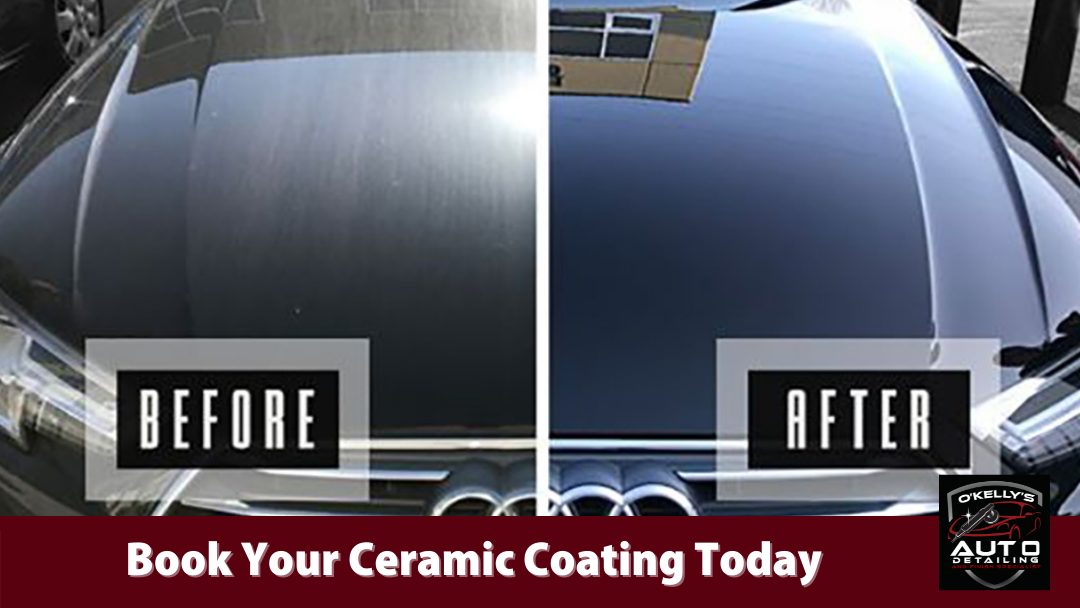Why Ceramic Finish Is the Ultimate Solution for a Perfect Finish
Ceramic coating has actually emerged as a leading solution for those seeking a remarkable coating for their vehicles, many thanks to its remarkable resilience and protective attributes. What elements really set ceramic finishing apart?
What Is Ceramic Finish?

When applied appropriately, ceramic finish develops a hydrophobic surface that repels water and dirt, making it less complicated to clean and preserve. Unlike traditional waxes or sealants, which usually supply short-lived security, ceramic coverings can last for several years, depending upon the item quality and application technique. The procedure of applying ceramic coating calls for precise prep work, including thorough cleansing and occasionally paint adjustment, to make certain ideal bonding and effectiveness.
Ceramic finishes are not limited to automotive surfaces; they can additionally be used on numerous materials, consisting of glass, steel, and plastics, offering a functional remedy for boosting protection. On the whole, ceramic finish stands for a considerable improvement in surface protection innovation, integrating both aesthetic and useful benefits for a wide variety of applications.
Benefits of Ceramic Finish
While numerous surface security choices exist, the benefits of ceramic layer stick out because of its one-of-a-kind residential or commercial properties and durable performance. One of the key benefits is its phenomenal durability. Ceramic Coating Philadelphia. Unlike traditional wax or sealants that require frequent reapplication, ceramic finishes supply a resistant layer that can last for a number of years, considerably lowering upkeep efforts
An additional notable advantage is enhanced protection against ecological pollutants. Ceramic coatings develop a hydrophobic surface area that drives away water, dirt, and different toxins, making it simpler to clean up. This function not only maintains the automobile's look but likewise decreases the threat of corrosion and oxidation, especially in rough climate condition.
Furthermore, ceramic layers provide superior resistance to UV rays, preventing fading and degradation of paint with time. This UV defense is essential for keeping the aesthetic value of vehicles and surface areas exposed to route sunshine.
Furthermore, the glossy coating accomplished with ceramic finish improves the total visual allure, offering surface areas a showroom-quality luster. On the whole, ceramic coatings represent a significant advancement in surface defense modern technology, supplying long-lasting benefits that satisfy both aesthetic and functional demands.
How It Functions
Comprehending the science behind ceramic finishes exposes how they supply such remarkable protection and durability. At its core, a ceramic covering is a fluid polymer that chemically bonds with the automobile's factory paint. This bonding creates a safety layer that is both hydrophobic and oleophobic, repelling water, dirt, and oil. The primary element of a lot of ceramic finishings is silicon dioxide (SiO2), which is originated from quartz. This compound adds to the covering's solidity and resistance to scratches, UV rays, and ecological pollutants.
The application procedure entails numerous actions, consisting of surface prep work, which is critical to accomplishing optimal adhesion. As soon as used, the coating undertakes a curing process, during which it hardens and develops a semi-permanent bond with the paint surface area. This bond is what identifies ceramic finishings he has a good point from conventional waxes and sealants, giving a longer-lasting protective barrier that can sustain for several years.
Furthermore, the thickness of the layer can improve its protective high qualities, ensuring that it can withstand extreme conditions. Inevitably, the science of ceramic finishes incorporates sophisticated materials with innovative application strategies to deliver an unmatched level of defense and aesthetic enhancement for vehicles.
Comparison With Traditional Methods
When compared to standard paint protection methods such as sealers and waxes,The benefits of ceramic finishings end up being particularly apparent. While waxes use a temporary sparkle, generally lasting a few weeks to a couple of months, ceramic coverings give a durable protective layer that can sustain for several years. This durability significantly reduces the regularity of reapplication, making ceramic coatings a much more cost-effective option over time.
Furthermore, typical methods frequently need substantial preparation and multiple applications to attain a satisfactory degree of defense. In contrast, ceramic finishings bond at a molecular degree with the automobile's surface, creating a robust guard against ecological pollutants like UV rays, acid rain, and roadway salts. This bond boosts the automobile's resistance to scrapes and swirl marks, which are common with typical official website waxes and sealers.
Moreover, the hydrophobic buildings of ceramic coatings drive away water and dirt, resulting in simpler cleansing and maintenance. In contrast, wax and sealant-treated surfaces can draw in grime, demanding even more regular cleaning - Ceramic Coating Philadelphia. On the whole, ceramic finishings not only offer exceptional protection yet likewise supply a much more aesthetically enticing and enduring surface, establishing them as the preferred option for critical lorry proprietors
Application and Maintenance Tips

Using a foam applicator, apply the finishing in small sections, complying with the supplier's standards pertaining to density and overlap. Allow enough treating time in between coats, more helpful hints normally 24 hr, to guarantee correct bonding. After application, it is important to prevent direct exposure to water or severe components for at the very least a week to enable the finishing to totally heal.
Additionally, utilizing a ceramic upkeep spray can enhance the layer's hydrophobic homes and durability. Routine evaluations for any indications of wear will certainly help maintain the finish's integrity and protect that immaculate surface.
Conclusion
In final thought, ceramic finish arises as an exceptional choice for attaining a flawless automobile coating. By developing a robust bond with manufacturing facility paint, ceramic layer properly guards versus scratches, UV rays, and ecological contaminants.
